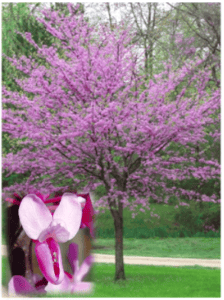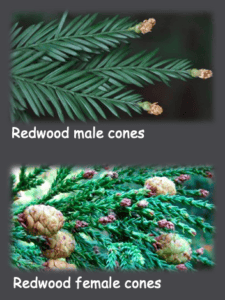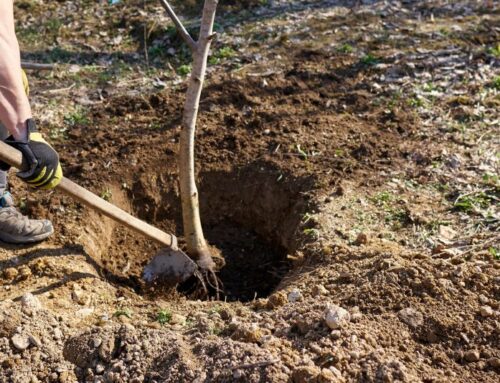Chances are you’ve admired a colorful tree in bloom. Or maybe you’ve sneezed at blooming pine cones. Or remember that time you stepped on mushy tree fruits?
Despite our interactions with flowers, cones, and fruits, trees do not produce them to please or annoy us. They are the backbone of creating the next generation of trees. The goal of reproduction is the same for plants and animals, but the methods vary. Trees go beyond our basic categories of male and female. Understanding tree reproduction can help explain why some trees are attractive when in bloom and others aren’t. It’ll help you predict which trees shed pollen profusely, and which trees produce fruit. Knowing your trees means you’re better able to select your ideal tree to plant!
What’s in A Flower?
Simply put, a flower is the sexually reproductive organ of a plant. The diagram below shows basic flower parts and functions.
- Sepals: The “protective shield” surrounding the flower. It is often green.
- Petals: The “pretty dress” that attracts people and animal pollinators. In some species, petals are diminished, absent, or green.
- Anthers: The male reproductive organ. It produces pollen, which fertilizes the stigma. Bees also like to eat pollen for protein!
- Pistil: The female reproductive organ. Produces seeds and fruit if fertilized.
It must be noted that pine trees and other gymnosperms lack flowers and fruits. Rather, they produce seed and pollen cones. But the basic function and purpose of cones and flowers are the same.
Tree Reproduction Categories
Tree reproduction categories are easily distinguished by the flower types they have. Flowers can be both male and female, only male, or only female.

Redbud trees have cosexual flowers.
1. Cosexual Trees
Flower type: Cosexual flowers (flowers with both male and female parts).
Quick Facts
- 80% of broadleaf trees are cosexual.
- Many are insect-pollinated and showy, making them good ornamentals.
- Insect pollination is more efficient than wind pollination, so the trees produce less pollen and are less likely to cause allergies.
- Examples: cherry, magnolia, redbud
2. Monoecious Trees

Redwood trees are moneocious.
Flower type: Separate male and female flowers on the same individual tree. Monoecious means “one house”. To remember this, just think only one house or one tree is needed to produce seeds because the tree has both male and female flowers.
Quick Facts
- Many are wind-pollinated.
- Wind-pollinated trees produce profuse, light pollen. They are more likely to cause allergies than insect-pollinated trees.
- Male and female flowers are often segregated, with female flowers on top to prevent self-fertilization when the wind blows.
- Examples: oak, redwood
3. Dioecious Trees

Cottonwood trees are dioecious.
Flower type: Separate male and female flowers on separate individual trees. Dioecious means “two houses”. To remember this, just think that two houses or two trees, one male and one female, are needed to produce seeds.
Quick Facts
- Many are wind-pollinated.
- Wind-pollinated trees produce profuse, light pollen. They are more likely to cause allergies than insect-pollinated trees.
- Male trees can grow faster and have lower death rates because the energy cost of pollen is usually less than that of seeds and fruit.
- Only female trees will produce fruit.
- Only male trees produce pollen and are potentially allergenic.
- Examples: ginkgo, podocarpus, cottonwood





